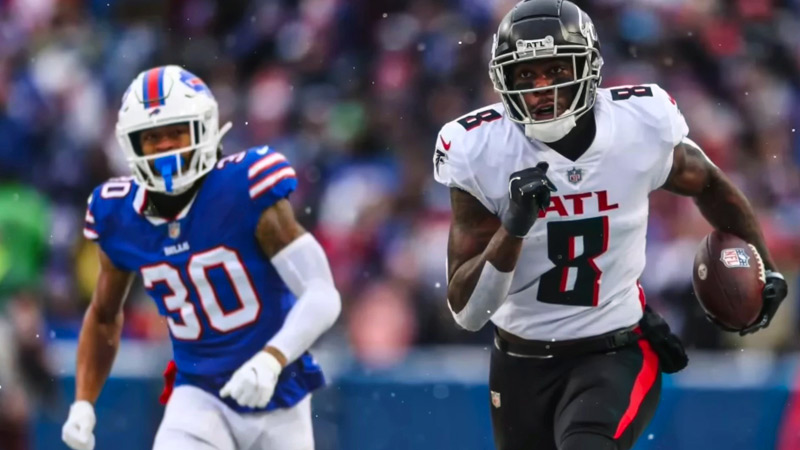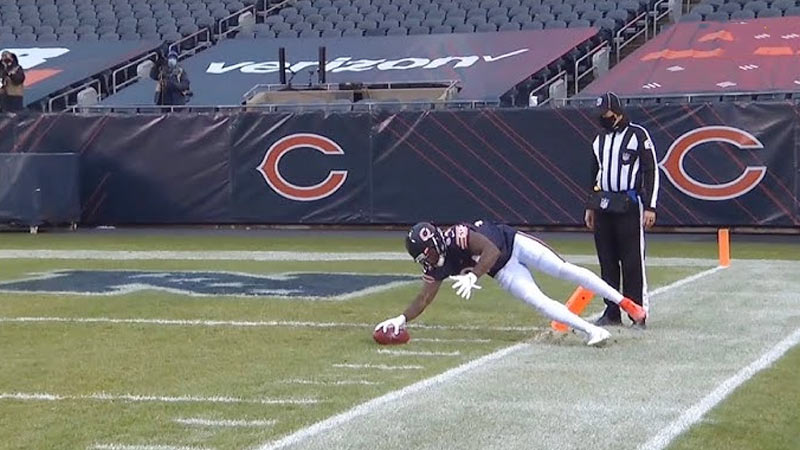In college American football, where every second counts, the ticking of the game clock is a relentless and omnipresent force. The sport’s unique set of rules governs precisely when the clock stops, creating a dynamic and strategic element within each contest.
Understanding these pivotal moments when time halts is essential for players, coaches, and avid fans alike.
Whether it’s a player sprinting for the sideline, a quarterback launching a pass, or a coach deciding when to call a timeout, the intricacies of when the clock ceases its relentless march can shape the outcome of a game.
In this exploration, we delve into the intricacies of when and why the clock stops in college American football, uncovering the strategic art of time management on the gridiron.
When Does the Clock Stop in College American Football? -10 Reasons
In college American football, the clock plays a crucial role in regulating the flow of the game and determining the length of each quarter and the overall duration of the match.
Understanding when the clock stops is essential for players, coaches, and fans alike. The rules governing when the clock stops in college football are designed to balance the competitive nature of the sport with the need to keep the game moving and ensure fairness.
Here are 11 key situations in which the clock stops during a college football game:
1. Out of Bounds
When a ball carrier carries the football out of bounds, the clock stops until the ball is snapped for the next play. This rule ensures that the clock doesn’t run when the ball is not in play, allowing teams to conserve time or huddle for strategy.
2. Incomplete Passes
When a pass is ruled incomplete, the clock stops until the next snap. This rule prevents the clock from running while officials assess the completion of a pass.
3. First Downs
After a team gains a first down, the clock stops until the ball is set for the next play. This rule gives the offense time to reset and run their next play without losing precious seconds.
4. Change of Possession
When there is a turnover or change of possession, such as an interception or fumble recovery, the clock stops until the new offensive team snaps the ball. This allows the new offensive team to set up their play.
5. Timeouts
Both teams have the option to call timeouts to stop the clock. Each team typically has a set number of timeouts per half, which they can use strategically to manage the game clock and make adjustments.
6. Penalties
In some situations, penalties can stop the clock. For example, if a defensive player commits a penalty that gives the offense a first down, the clock may stop temporarily.
7. Two-Minute Warning
In college football, there is no formal “two-minute warning” like there is in the NFL. However, when there are two minutes or less remaining in each half, the clock stops temporarily after a first down to move the chains and then restarts once the ball is set for the next play.
8. Scoring Plays
After a touchdown or a field goal, the clock stops temporarily to account for the scoring play, extra point, or kickoff. It then resumes once the ball is in play again.
9. Administrative Stoppages
The clock may stop for administrative reasons, such as injury timeouts, or equipment issues, or to address any other issues that may arise during the game.
10. Media Timeouts
In televised games, there are scheduled media timeouts, usually after a certain number of plays, to accommodate commercial breaks. The clock stops during these breaks and resumes when play restarts.
When Does the Clock Run Continuously in College American Football

In college American football, the game clock runs continuously in certain situations to maintain the pace of the game and ensure fairness.
Here are some situations when the clock runs continuously:
Normal Game Play
During normal gameplay, the clock runs continuously between snaps. This means that once the ball is spotted and the referee signals the ready for play, the game clock starts running, and it only stops for the reasons mentioned earlier.
Running Plays In-Bounds
When a ball carrier remains in bounds after a running play (i.e., they do not go out of bounds), the game clock continues to run.
This is a fundamental aspect of time management, as teams may choose to run the ball to keep the clock moving when trying to protect a lead or control the tempo of the game.
Completed Passes In-Bounds
Similarly, if a completed pass is followed by the receiver staying in bounds and not going out of bounds, the game clock continues to run. Teams must be aware of this when managing the clock in late-game situations.
After Administrative Stoppages
Once an administrative stoppage, such as an injury timeout or equipment issue, is resolved, the game clock typically restarts on the referee’s signal, resuming normal game play.
Following Penalties
After most penalties, the clock resumes on the referee’s signal once the ball is spotted and the teams are ready to continue play.
However, some penalties, such as those that result in an automatic first down, may cause the clock to stop and then restart once the ball is ready for play.
After Scoring Plays
Following a touchdown, field goal, or safety, the clock restarts when the ball is kicked off or put into play by the scoring team. This is designed to prevent excessive delays after scoring plays.
Normal Stoppage Situations
In situations like team timeouts, clock adjustments, and other standard stoppages of play, the game clock continues to run after they are resolved.
Strategies for Managing the Clock
Effective clock management is a crucial aspect of college American football, and teams employ various strategies to maximize their use of time or to minimize the time available to their opponents.
Here are some key strategies for managing the clock in college football:
Hurry-Up Offense

Teams often use a hurry-up or no-huddle offense to keep the tempo fast and prevent the defense from making substitutions or catching their breath. This can be especially useful in two-minute drills at the end of halves.
Spike the Ball
In situations where time is of the essence, teams may spike the ball to stop the clock. The quarterback throws the ball directly into the ground as soon as they receive it from the center, and this results in an incomplete pass that stops the clock.
Timeouts
Coaches strategically use their timeouts to stop the clock when necessary. Timeouts can be employed to preserve time for a potential game-winning drive, set up a crucial play, or make adjustments.
Running Plays
To eat up the clock and control the game’s tempo, teams may choose to run the ball more frequently, especially when they have a lead. Running plays tend to keep the clock running since the ball carrier stays in bounds.
Managing the Play Clock
Teams may milk the play clock by taking their time in the huddle, making adjustments at the line of scrimmage, or even intentionally incurring a delay of game penalty to move the ball back but gain more time.
Situational Awareness
Coaches and quarterbacks need to be aware of game situations, such as the number of timeouts remaining, the score, and the time on the clock.
This awareness helps them make informed decisions about whether to run the ball, pass or use timeouts.
Two-Minute Drills
Teams practice two-minute drills to efficiently move down the field in a short amount of time. These drills focus on quick passes, sideline plays, and out-of-bounds receptions to conserve time.
Clock-Killing Drives
When protecting a lead, teams may employ a clock-killing drive strategy, which involves running the ball consistently, staying in bounds, and making short, high-percentage passes to chew up clock time.
Situational Substitutions
Coaches may make strategic substitutions to conserve time. For example, they might use players familiar with the hurry-up offense during two-minute drills or have a designated field goal unit ready to quickly take the field.
Clock Awareness on Defense
Defenses can also play a role in clock management by limiting the effectiveness of the offense. They may avoid tackling the ball carrier out of bounds and allow short, controlled passes to keep the clock running.
Onside Kicks
In onside kick situations, teams attempt to recover the ball quickly to regain possession and have more time for their offense.
Prevent Defense
On defense, teams may switch to a prevent defense in late-game situations to prevent long passing plays and force shorter, time-consuming completions.
FAQS
Does the clock stop after a first down in college football?
In college football, the clock briefly stops after a first down to allow the chains to be reset, but it quickly resumes once the chains are set and the ball is ready for play.
When does the clock restart after an out-of-bounds play?
If a player carrying the ball goes out of bounds, the clock stops. It resumes when the ball is snapped for the next play unless it’s within the final two minutes of each half, in which case the clock starts when the ball is snapped.
What happens to the clock during a college football halftime?
At halftime in college football, the clock stops for the duration of the halftime break. It only resumes when the second-half kickoff takes place.
Can the clock stop due to a penalty in college football?
Yes, the clock can stop due to certain penalties in college football, such as pass interference, personal fouls, or unsportsmanlike conduct.
Last Words
In college American football, the clock serves as a critical element of the game’s pacing and strategy. Understanding when it stops is essential for both players and fans.
Whether it’s after a touchdown, field goal, timeout, or during injury timeouts, the clock’s stoppages play a pivotal role in shaping the flow of the game.
Additionally, its behavior in scenarios like first downs and out-of-bounds plays adds layers of complexity to the game’s strategy, making each second a valuable commodity.
As fans eagerly watch the countdown in the final two minutes of each half, it’s evident that the clock’s precise management can be the difference between victory and defeat.







